Key takeaways
- Color significantly influences the mood of a photograph, with warm hues evoking comfort and cool tones suggesting calmness or melancholy.
- Understanding color theories, such as complementary and analogous colors, can enhance emotional storytelling in photography.
- Techniques like selective color blocking and adjusting color temperature can shape the viewer’s emotional experience and narrative of an image.
- Personal reflections on color choices often reveal deeper emotional states, demonstrating the powerful connection between color and feelings in photography.
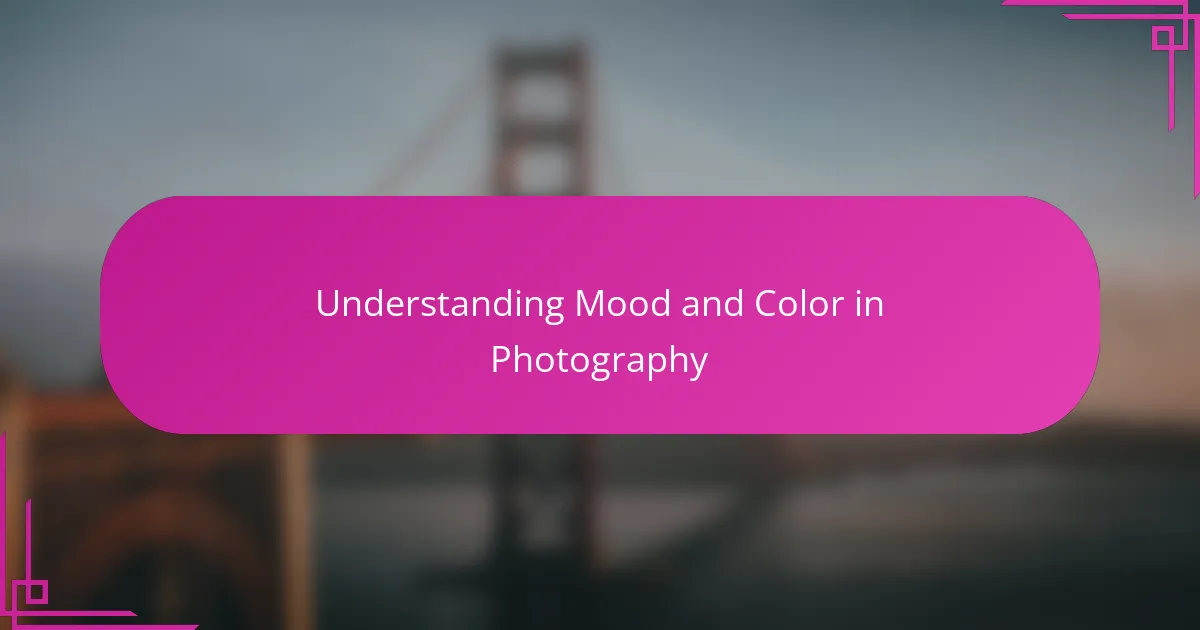
Understanding Mood and Color in Photography
Color plays a pivotal role in shaping the mood of a photograph. From my experience, a warm hue like orange or red can evoke feelings of comfort and passion, while cooler tones like blue often bring a sense of calm or melancholy. Have you ever noticed how a single color shift can completely change the emotional impact of an image?
When I first started experimenting with color in my photos, I realized it wasn’t just about what looked good—it was about how the colors made me feel and what story they told. Is the scene serene or tense? Joyful or somber? I find myself asking these questions each time I choose a palette, understanding that color is a silent narrator in every frame.
Finally, mood and color are inseparable because our brains are wired to interpret colors emotionally. This connection means that photographers hold a powerful tool—one that can guide viewers’ feelings without a single word. It’s a reminder that photography is not just visual; it’s deeply emotional and psychological too.
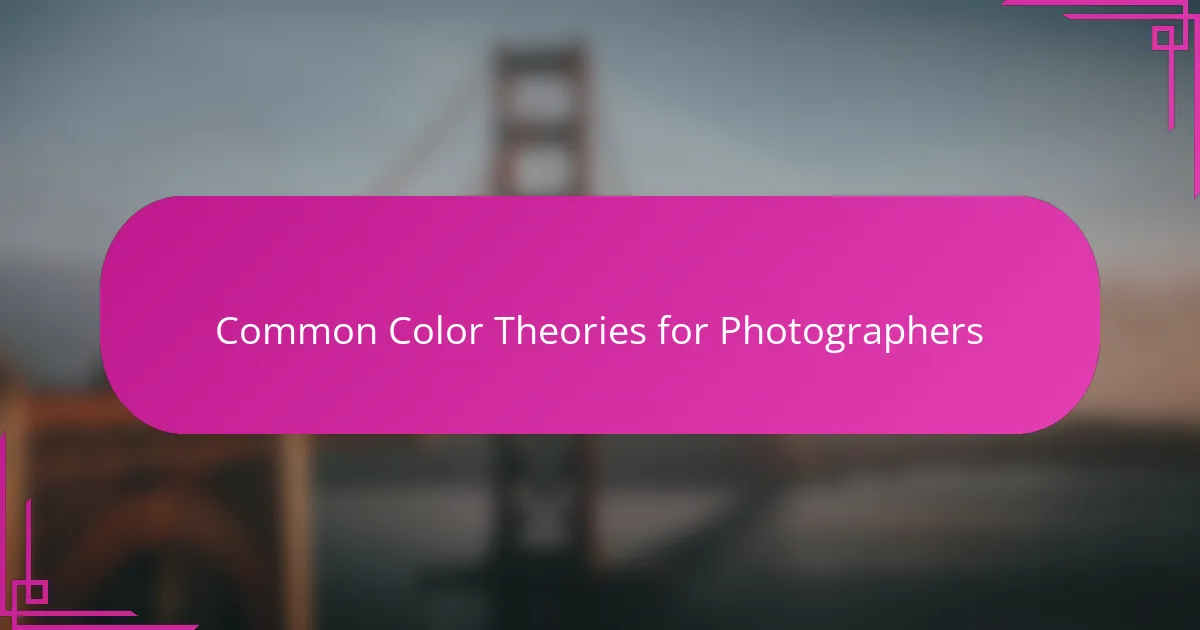
Common Color Theories for Photographers
One of the color theories I often lean on is the color wheel, especially complementary colors like blue and orange. When I pair these in a shot, there’s an undeniable balance that feels both dynamic and harmonious. Have you ever witnessed how opposites on the wheel create visual tension that’s actually pleasing to the eye?
Another theory that’s shaped my work is analogous colors—those sitting close together on the wheel. Using shades like green, blue, and teal together often wraps my images in a cohesive mood, almost like a color-family hug. It’s subtle but powerful, suggesting unity while keeping things interesting.
I also find the psychological associations behind colors fascinating. For instance, yellow can evoke cheerfulness but might also signal caution depending on context. Understanding these nuances helps me decide not just what to shoot, but how to edit, ensuring the emotional tone matches the story I want to tell. Have you tried deliberately choosing colors with these feelings in mind? It’s a game-changer.
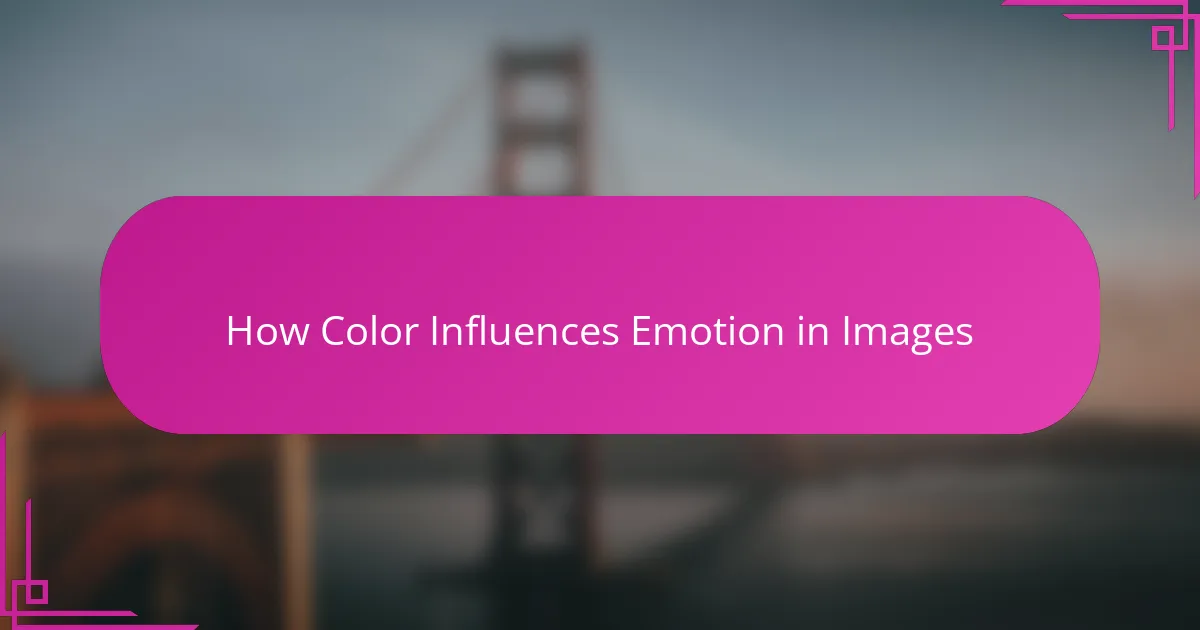
How Color Influences Emotion in Images
Color’s influence on emotion in images is something I’ve constantly witnessed in my photography journey. For example, a splash of vibrant red once made an ordinary street scene feel electrifying and charged with energy, while a soft blue wash in another photo brought an unexpected sense of tranquility. Have you ever felt how these color shifts make you feel before even knowing the story behind the image?
Sometimes I catch myself tweaking colors in post-processing just to amplify the mood I want the viewer to experience. It’s fascinating how subtle changes—like warming up a shadow or cooling down a highlight—can completely steer the emotional direction of a photo. This hands-on manipulation made me realize that color isn’t just about aesthetics; it’s about emotional storytelling.
I often wonder why some images instantly evoke joy or sadness without any words or context. From what I’ve learned and felt, it’s color that acts as an invisible emotional guide, pointing us toward specific feelings. That invisible connection is what makes photography such a powerful medium—color moves our hearts before our minds fully catch up.
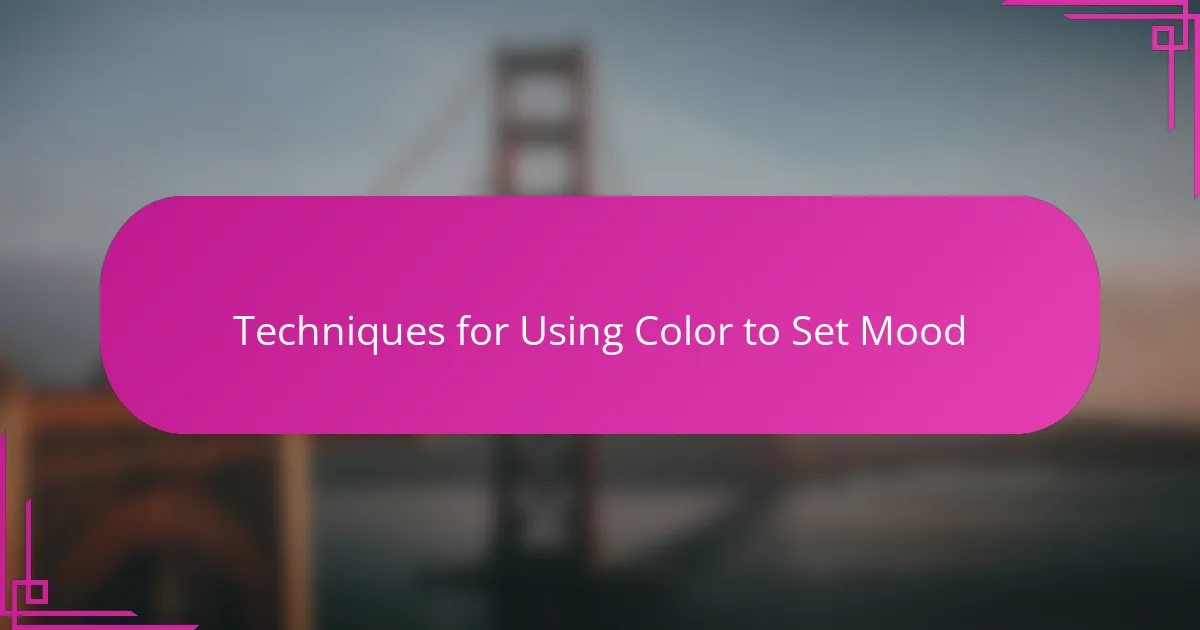
Techniques for Using Color to Set Mood
One technique I rely on is selective color blocking—choosing one dominant hue to shape the entire mood of the image. I remember a portrait session where focusing on deep reds transformed the feel from casual to intense, almost cinematic. Have you tried limiting your palette like this and noticed how it simplifies the emotional message?
Another approach I often use is playing with color contrast to create tension or harmony. Pairing bright, saturated colors against muted backgrounds can make emotions pop, like joy bursting through calmness. This contrast isn’t just visual; it’s emotional, and it’s amazing how viewers respond to that push and pull.
I also experiment with color temperature, warming up or cooling down an image to subtly influence the mood. A warmer tone tends to invite closeness and nostalgia, while cooler hues can feel distant or reflective. Adjusting temperature in post-processing has become my go-to method when the raw shot needs an extra emotional nudge. Have you ever noticed how a tiny shift in warmth changes the whole feeling?
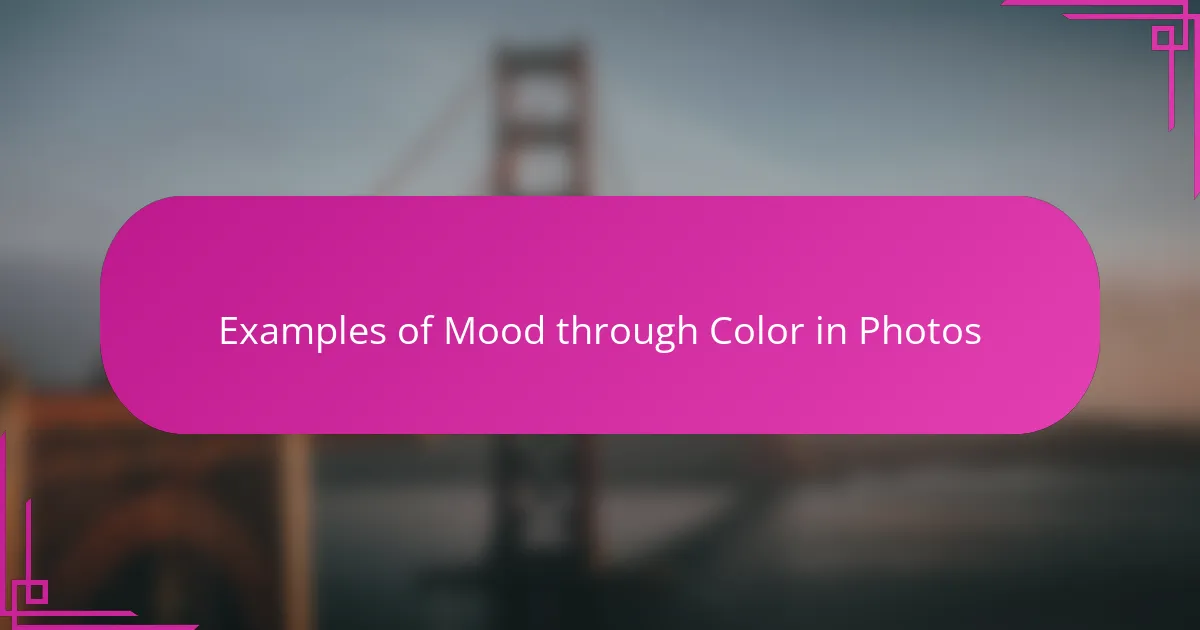
Examples of Mood through Color in Photos
One of my favorite examples is a sunset portrait bathed in golden yellows and fiery oranges. That warm glow never fails to evoke a sense of hope and intimacy, as if the subject is wrapped in a gentle, comforting embrace. Have you ever experienced how those colors make you feel instantly connected to the moment?
Contrast that with a photo I took on a foggy morning, where muted grays and icy blues set a completely different tone—quiet, introspective, almost lonely. It struck me how the color palette alone steered my emotions toward reflection, even without seeing the subject’s expression clearly. Have you noticed how cooler hues invite a slower, more thoughtful experience?
Then there are shots where I play with bold, saturated reds to inject energy and urgency, like in a bustling street scene. The colors make the chaos feel alive and electric, compelling viewers to feel the pulse of the moment. Isn’t it amazing how color can turn an ordinary snapshot into an emotional story?
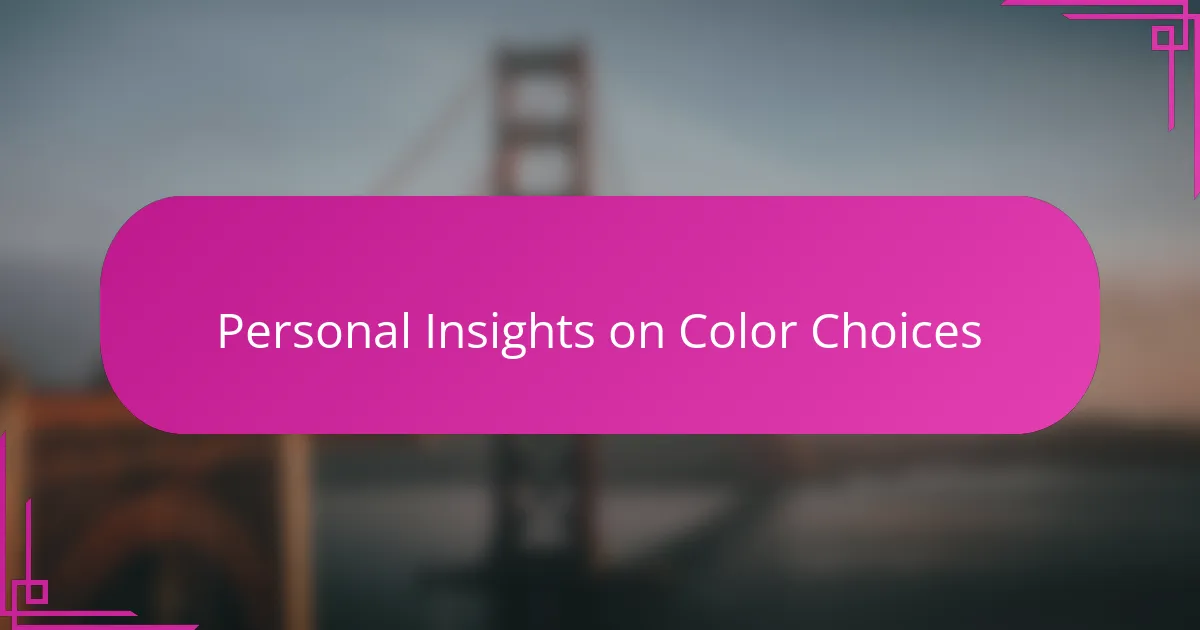
Personal Insights on Color Choices
Choosing colors in my photos often feels like picking the mood’s anchor. I recall one shoot where I deliberately embraced muted earth tones to convey a sense of nostalgia—it wasn’t just about the look, but the emotional weight those colors carried. Have you ever caught yourself gravitating toward certain hues because they just feel right emotionally?
Sometimes, I find that color choices reflect my personal state more than the subject itself. On days when I feel contemplative, I lean into cool blues or soft grays, which seems to invite viewers into that introspective space with me. It’s fascinating how these decisions are less about rules and more about what resonates internally.
I also experiment with unexpected color combos to challenge typical associations. For instance, pairing pink with dark shadows once created an eerie yet delicate atmosphere I hadn’t anticipated. This taught me that color choices aren’t just about convention—they’re opportunities to evoke surprising emotions. Have you tried stepping outside the usual palettes to see what feelings emerge?